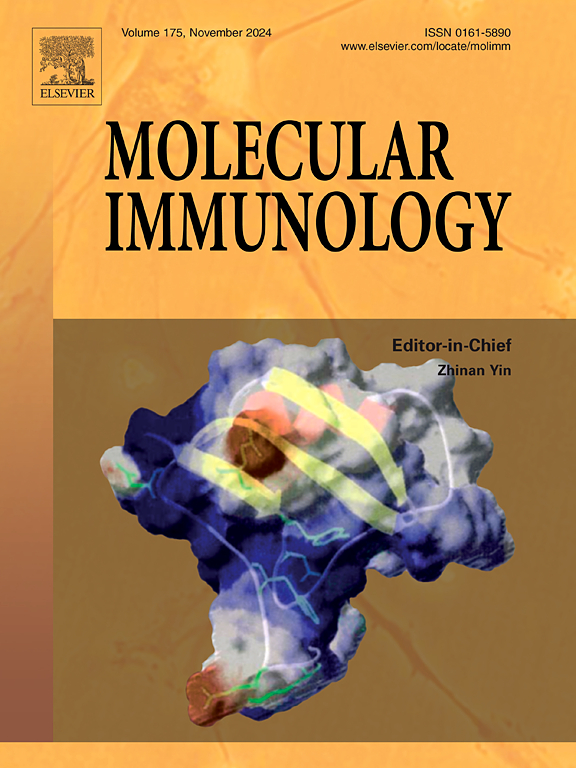原儿茶醛通过H3K18乳酸化介导的Acvr1c表达促进血管生成,从而促进糖尿病伤口愈合。
IF 3
3区 医学
Q2 BIOCHEMISTRY & MOLECULAR BIOLOGY
引用次数: 0
摘要
伤口恢复延迟是影响糖尿病患者的主要健康问题。组蛋白乳酸化参与组织修复。然而,原儿茶醛(PCA)是否通过组蛋白乳酸化促进糖尿病伤口愈合尚不清楚。本研究通过构建糖尿病创面小鼠模型,探讨PCA在体内的作用。采用染色质免疫沉淀测序(ChIP-seq)检测PCA处理下受H3K18乳酸化(H3K18la)影响的基因。通过细胞实验研究了PCA对组蛋白乳酸化和血管生成的影响及其机制。我们发现,PCA加速了糖尿病小鼠的伤口愈合和血管生成,并显著降低了伤口组织的炎症反应。与对照组相比,模型组乳酸和H3K18la水平升高,但PCA处理显著逆转了它们的水平。ChIP-seq分析显示,H3K18la在Acvr1c位点显著富集,这种组蛋白修饰在PCA处理下被下调。PCA通过H3K18la显著增强huvec中Acvr1c的表达。此外,与对照组相比,PCA治疗显著提高了细胞活力、迁移和管形成。然而,这种作用被Acvr1c敲低所抵消。综上所述,PCA通过增加h3k18la介导的Acvr1c表达促进HUVEC血管生成,从而促进糖尿病创面愈合。这可能为提高糖尿病伤口愈合的有效性提供一种新的治疗方法。本文章由计算机程序翻译,如有差异,请以英文原文为准。
Protocatechuic aldehyde promotes diabetic wound healing by enhancing angiogenesis via H3K18 lactylation-mediated Acvr1c expression
Delayed wound recovery is a major health issue affecting people with diabetes. Histone lactylation is involved in tissue repair. However, it is not clear whether protocatechuic aldehyde (PCA) promotes diabetic wound healing through histone lactylation. In this study, a diabetic wound mouse model was constructed to delve into the role of PCA in vivo. Chromatin immunoprecipitation sequencing (ChIP-seq) was used to determine genes affected by H3K18 lactylation (H3K18la) under PCA treatment. The effects and mechanisms of PCA on histone lactylation and angiogenesis were investigated through cellular experiments. We found that PCA accelerated wound healing and angiogenesis in diabetic mice, and significantly reduced the inflammatory response in wound tissues. Lactate and H3K18la levels were augmented in the model group in comparison with the control group, however, PCA treatment remarkably reversed their levels. ChIP-seq analysis revealed a significant enrichment of H3K18la at the Acvr1c locus, and this histone modification was downregulated by PCA treatment. PCA remarkably enhanced Acvr1c expression through H3K18la in HUVECs. Moreover, PCA treatment markedly elevated cell viability, migration and tube formation in comparison with the control group. However, this effect was counteracted by Acvr1c knockdown. In conclusion, PCA promoted HUVEC angiogenesis by increasing H3K18la-mediated Acvr1c expression, thereby promoting diabetic wound healing. This could offer a new treatment approach to enhance the effectiveness of healing diabetic wounds.
求助全文
通过发布文献求助,成功后即可免费获取论文全文。
去求助
来源期刊

Molecular immunology
医学-免疫学
CiteScore
6.90
自引率
2.80%
发文量
324
审稿时长
50 days
期刊介绍:
Molecular Immunology publishes original articles, reviews and commentaries on all areas of immunology, with a particular focus on description of cellular, biochemical or genetic mechanisms underlying immunological phenomena. Studies on all model organisms, from invertebrates to humans, are suitable. Examples include, but are not restricted to:
Infection, autoimmunity, transplantation, immunodeficiencies, inflammation and tumor immunology
Mechanisms of induction, regulation and termination of innate and adaptive immunity
Intercellular communication, cooperation and regulation
Intracellular mechanisms of immunity (endocytosis, protein trafficking, pathogen recognition, antigen presentation, etc)
Mechanisms of action of the cells and molecules of the immune system
Structural analysis
Development of the immune system
Comparative immunology and evolution of the immune system
"Omics" studies and bioinformatics
Vaccines, biotechnology and therapeutic manipulation of the immune system (therapeutic antibodies, cytokines, cellular therapies, etc)
Technical developments.
 求助内容:
求助内容: 应助结果提醒方式:
应助结果提醒方式:


